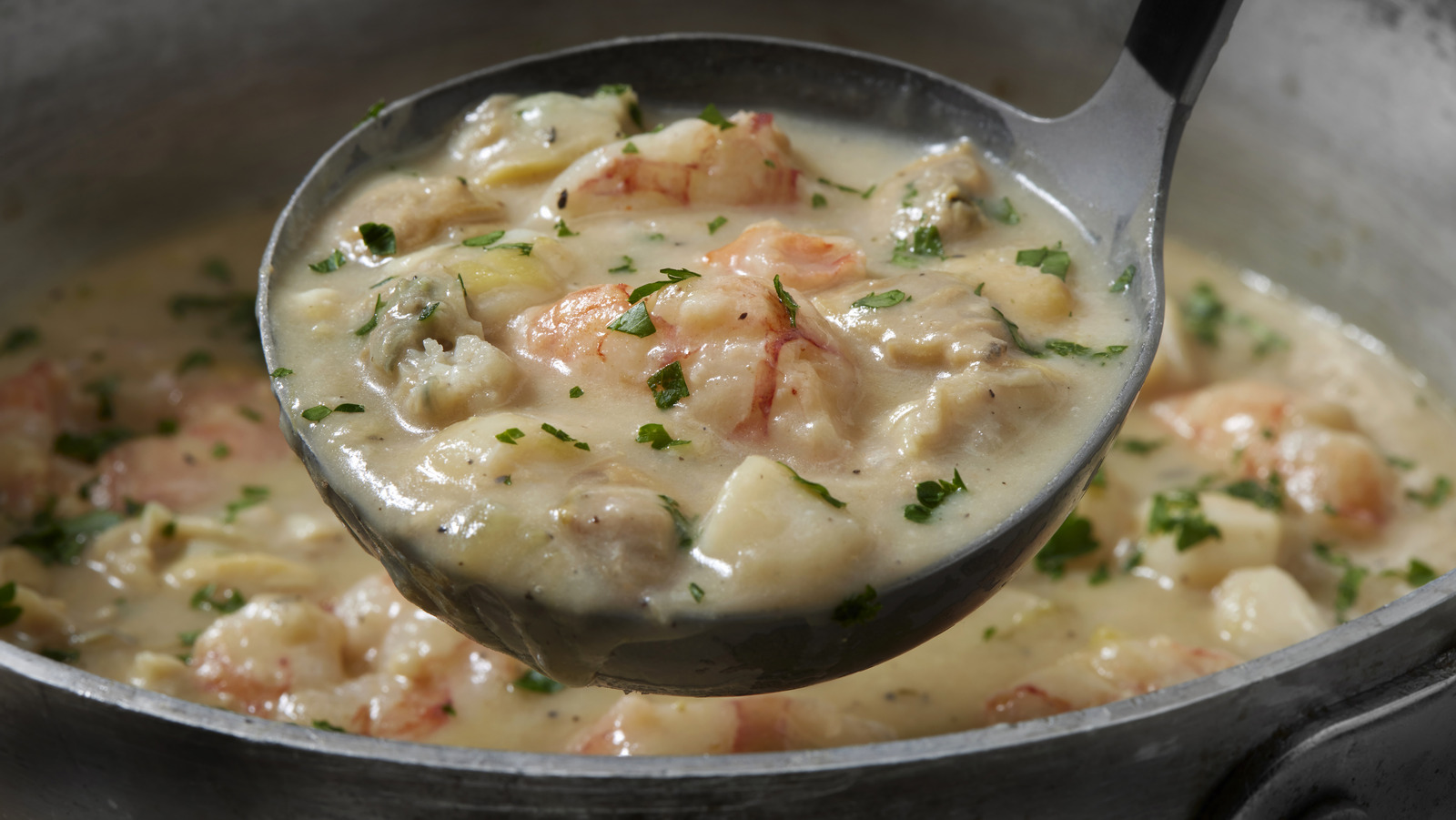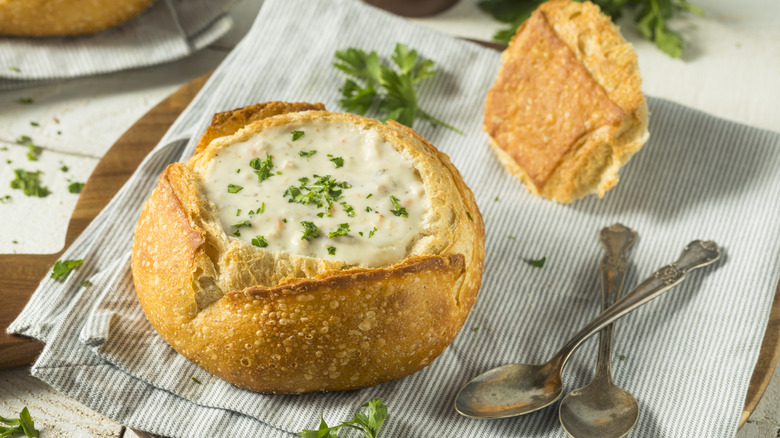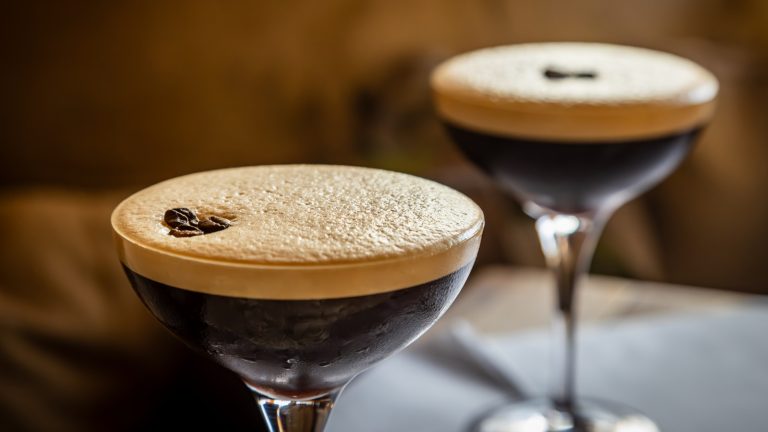Aside from a fresh-from-the-sea clam flavor, tender potatoes, and those cute, crunchy oyster crackers floating on top, New England and Manhattan clam chowder are almost completely different, yet they share the same name. One has only to look at a bowl of clam chowder to know whether it’s the Manhattan or New England version — one is red and brothy while the other is white and creamy — but there are many more differences than meet the eye.
The younger of the two, Manhattan clam chowder, came on the scene in the 1800s as the tomato was on the rise in popularity in the U.S. The dish was also influenced by surging immigrant population of Italians and Portuguese on the East Coast. Conversely, New England clam chowder is more than a century older than its tomato-based counterpart, with chowder recipes going as far back as the 1700s. It was introduced to the U.S. by British, French, and Nova Scotian immigrants and became popular in seafaring communities along the East Coast with cracker meal or flour used as a thickener instead of potatoes and cream or milk.
The origins of Manhattan clam chowder
A recipe for Manhattan clam chowder first appeared in a cookbook titled “Soups and Sauces” by Virginia Elliot and Robert Jones, published in 1934. Though the tomato-based soup has its adherents, many lovers of the older, New England-style clam chowder rebelled at the thought. A legislator tried to introduce a bill that made Manhattan clam chowder illegal in Maine. And according to What’s Cooking America, American chef, cookbook author, and teacher James Beard once voiced his thoughts on the dish: “That rather horrendous soup called Manhattan clam chowder … resembles a vegetable soup that accidentally had some clams dumped into it.”
Like the New England version, Manhattan clam chowder contains clams, pork (bacon or salt pork), onion, and potatoes, but that’s where the similarities end. The remainder of the dish includes the addition of garlic, celery, green bell pepper, carrots, and chopped or whole peeled tomatoes. In addition, most recipes use red or Spanish onion, and the broth is made from clam juice (or the liquor from the clams), water, or a combination of both. The result is a briny, brothy, tomato-flavored soup made hearty with chopped clam meat and potatoes. Manhattan clam chowder is also more herbaceous than its New England cousin, as many recipes call for thyme, bay leaf, and parsley.
New England clam chowder has a deeper history in the US
New England clam chowder was being made in the U.S. as early as the 18th century, but its first restaurant debut was at the Union Oyster House in the 1800s. It’s even been immortalized in great literature, as Herman Melville’s character Ishmael in the 1851 classic “Moby Dick” waxes poetic about New England clam chowder, saying, “Oh, sweet friends! hearken to me. It was made of small juicy clams, scarcely bigger than hazel nuts, mixed with pounded ship biscuit, and salted pork cut up into little flakes; the whole enriched with butter, and plentifully seasoned with pepper and salt.”
Creamy and rich, New England clam chowder is closer to a bisque than its fancy, lighter New York version. The dish follows a simple recipe of bacon, yellow onion, potatoes, water, and clams, with the addition of butter, milk, and half and half or heavy cream. Like Manhattan clam chowder, the New England (also called Boston) version is served with crunchy, hexagonal oyster crackers or saltines — though as Melville wrote, early versions of the dish apparently used crushed crackers or biscuits. In recent history, one of the most famous versions of the dish was served in a sourdough bread bowl on the historic Fisherman’s Wharf in San Francisco. Whether served in a bowl or San Francisco style in a loaf of bread, New England clam chowder is thick and rich, with a briny, buttery flavor and creamy texture. If you’re making your own clam chowder, be sure to follow our tips for cooking the best New England clam chowder.






